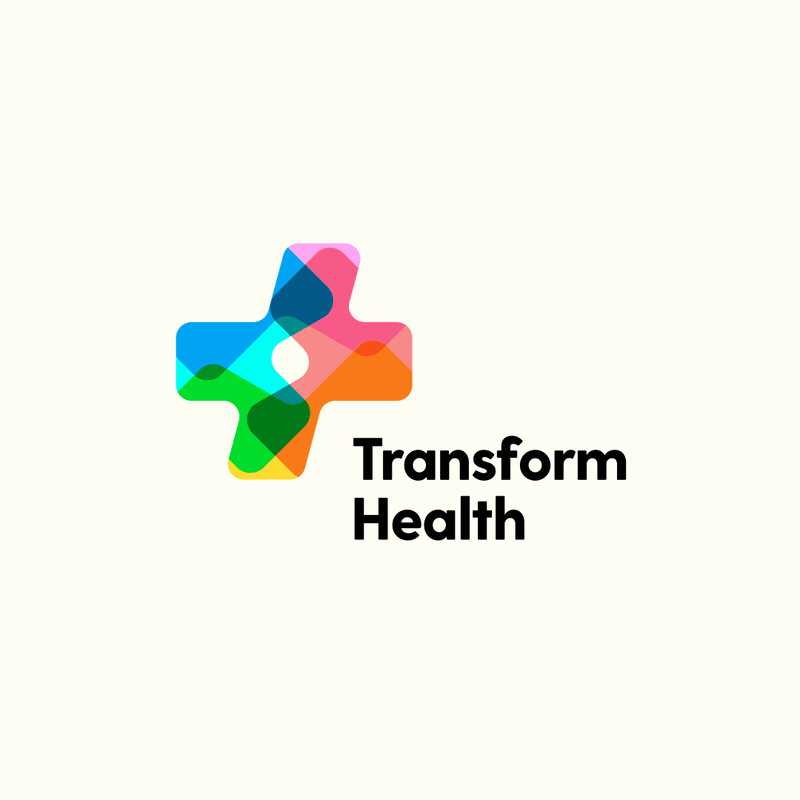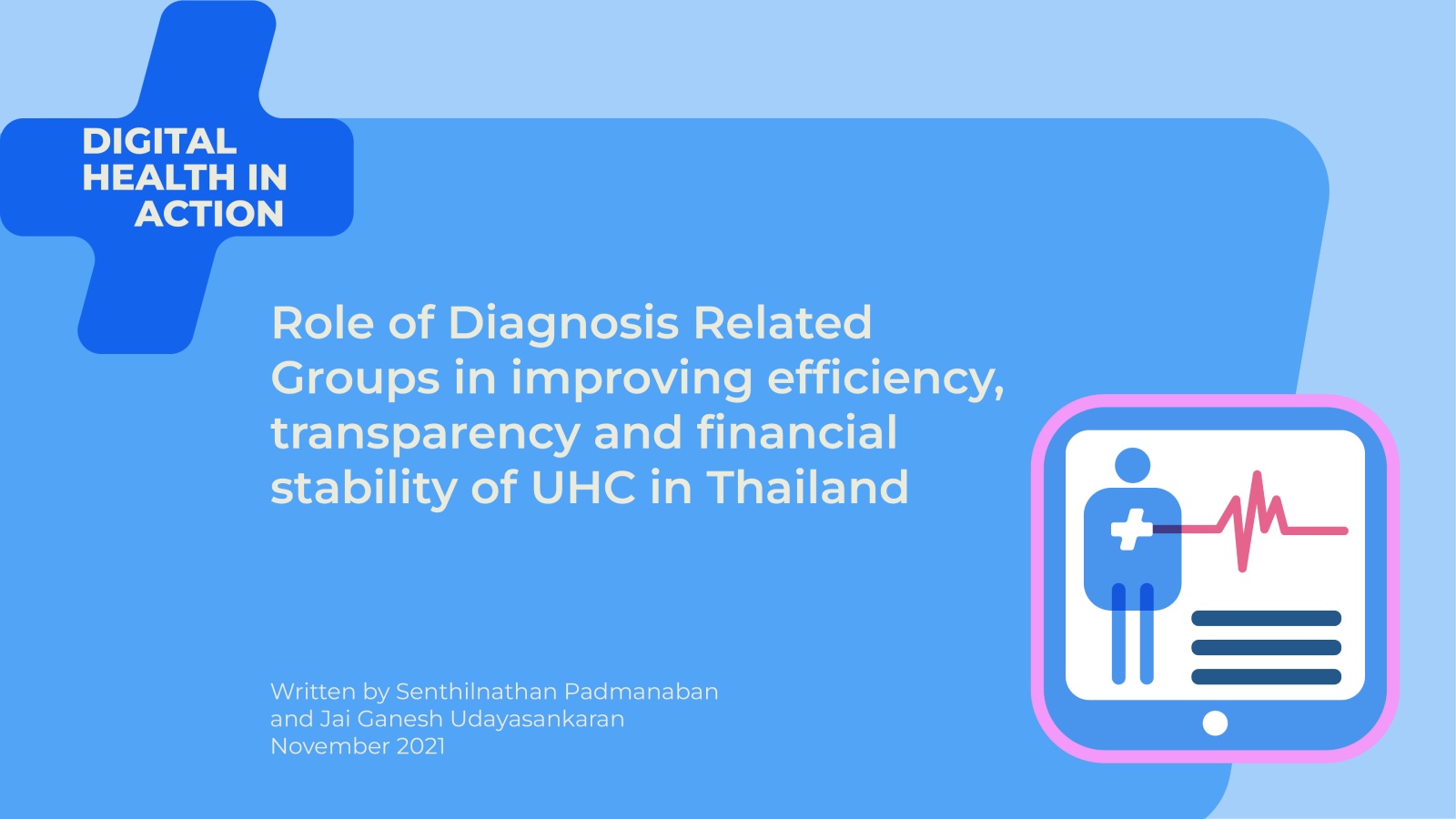Role of Diagnosis Related Groups in improving efficiency, transparency and financial stability of UHC in Thailand
Thailand was among the earliest Asian countries to commit to achieving universal health coverage (UHC). It’s approach to leveraging digital technologies provides some helpful lessons for countries at different stages of UHC implementation.
Thailand has three UHC schemes defined for different categories of beneficiaries: the Civil Servant Medical Benefit Scheme (CSBMS) for government employees, retirees, and their dependents; Social Security Scheme (SSS) for private-sector employees; and the Universal Coverage Scheme (UCS) that covers the remaining ~75% of the country’s population.
A critical factor to the success of Thailand’s UHC scheme is improving total enrolment through its integration with the Civil Registration system. Every child born is enrolled for a scheme as per the eligibility by issuing a unique citizen identification. The UHC policy in Thailand, during the development stages, relied on the National Health Accounts data to determine the need for outpatient and inpatient services at different levels of care.
Rising medical costs and investments have constantly threatened sustainability and private sector participation in UHC schemes. Thailand has countered these by implementing Diagnosis-Related Groups (DRG)—a system of grouping of patients according to medical diagnosis for purposes of paying hospitalisation costs—under a fixed global budget. Research activities on DRG detailing implementation steps under the radical health care reforms for
UHC facilitated the exclusive capitation reform. After the first installation of DRG dealing with high-cost cases of the low-income card scheme, subsequent Thai-DRG versions played a significant role in steering the UHC implementation and shaping the country’s health financing system through higher complexities.
UHC facilitated the exclusive capitation reform. After the first installation of DRG dealing with high-cost cases of the low-income card scheme, subsequent Thai-DRG versions played a significant role in steering the UHC implementation and shaping the country’s health financing system through higher complexities.
The National Health Security Office setup by law to manage the Universal Coverage Scheme was the first established governance mechanism to implement DRG according to the content in the National Health Security Act. However, the reluctance found during the first few years pointed to the need for a reliable tool and an apt information technology environment.
The Health Systems Research Institute (HSRI), an autonomous state agency established to achieve effective knowledge management in health system services, had first invested in developing “Thai DRG Grouper,” a software that facilitates a relative weightage system to calculate payments to hospitals. Subsequently funded by the National Health Security Office (NHSO), the software is now being used for managing DRG claims processing for the UCS in all hospitals. Recently, the development of Case-Mix Tools (including the Thai DRG Grouper) is self-funded through a minimal transaction fee levied for claims processing by the Health Information System Standard and Processing Administration (HISPA) under HSRI.
The DRG system made the payments attractive to hospitals and has also allowed collection of operational and financial data required to improve primary health care in the country. Processing of claims and reimbursements to hospitals is based on standard data sets and the International Classification of Diseases (ICD). The standard data set approach enables interoperability within the health system and offers flexibility for the hospitals to use any hospital information system that fits in the universally accepted interoperability standards and ability to export data in the specified standard format.
The outpatient and inpatient data sets are linked to evaluating the quality of the primary health care system in preventing non-communicable diseases and unnecessary hospitalisation. Further, HISPA (under the aegis of HSRI) has made extensive investments in standardising data requirements to improve the efficiency of UHC in the country. This was required as different payment methods, such as high-cost medicine, investigation, high-cost care medical devices, etc., that go beyond capitation and DRG, were implemented. A Thai Medicines Terminology (TMT) was developed not only for claim reimbursement but also for monitoring drug purchasing by hospitals. TMT is also used to track accessibility to high-cost drugs, auditing for fraud detection, and understand patients’ adherence to drug treatment.
The three public insurance schemes in the country have now adopted DRG for inpatient payment to hospitals; but the difference is the base rate payment for a unit of DRG relative weight. The civil servant medical benefit scheme (CSMBS) pays by hospital group rates, which are relatively higher than the universal coverage scheme (UCS) that pays by the regional global budget rates. The SSS, that originally pioneered the inclusive capitation marginally
pays by a more complex system (relative weight of 2 and higher) on a case by case basis.
pays by a more complex system (relative weight of 2 and higher) on a case by case basis.
Thus, Thailand’s DRG system inherits and facilitates complex financing mechanisms using the same harmonised tool. Further, DRGs and related interoperable software tools have also helped build an efficient UHC programme, which today stands as an example and inspiration for low-and-middle-income countries to implement efficient and effective UHC schemes within their fiscal constraints and operational complexities, yet also taking on board all the stakeholders including health care providers and hospitals.
Key lessons:
● Universal enrolment is critical for the success of financing schemes. Thailand has strengthened the process by linking UHC to the civil registration system, enrolling every child born in the country.
● While the DRG system and its criticality in containing costs are gaining traction worldwide, Thailand had instituted the system early and has successfully implemented digital solutions to enable the UHC to function efficiently even under fiscal constraints, operational complexities, and higher private sector participation. Thus, when countries are considering DRG implementation in UHC – earlier and digitised is better.
● Countries must invest in solutions that can extract operational health information linked with payment, so that good quality data is generated to evaluate the health care system’s performance, including primary health care.Also, it is critical to maximising the use of transactional and survey data in developing evidence-based health policies.
References:
1. Pannarunothai, Supasit; Health Management Information Systems for Universal Health Coverage
2. Official website of the National Health Security Office, Thailand (http://eng.nhso.go.th/view/1/home/Thailand-to-share-knowhow-of-DRG-payment-system/156/EN-US)
The authors acknowledge the support and significant contribution of Dr. Supasit Pannarunothai, Chair, Center of Health Equity Monitoring Foundation, Thailand.


